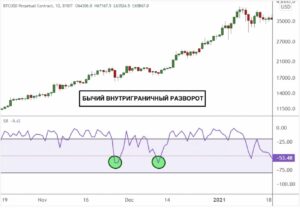Содержание
The funds maintain a substantial allocation to equities both prior to and after the target date, which can result in greater volatility over shorter time horizons. In this article we will look at what is driving this trend and the ramifications active vs. passive investing which to choose for investors in the current environment. The pursuit of alpha maximization may be achieved by mixing active and passive investments based on market efficiency and managers’ historical ability to generate alpha in the asset class.
For retirees who care most about income, these investors may actively choose specific stocks for dividend growth while still maintaining a buy-and-hold mentality. Dividends are cash payments from companies to investors as a reward for owning the stock. You can build wealth in many ways, but the approach of investing in stocks, bonds, and other assets that produce passive income is time tested.
Ask your advisor about choosing securities that meet your particular needs. The principal value of the Retirement Funds is not guaranteed at any time, including at or after the target date, which is the approximate year an investor plans to retire and likely stop making new investments in the fund. If an investor plans to retire significantly earlier or later than age 65, the funds may not be an appropriate investment even if the investor is retiring on or near the target date. The funds are not designed for a lump‑sum redemption at the target date and do not guarantee a particular level of income.
- For most people, there’s a time and a place for both active and passive investing over a lifetime of saving for major milestones like retirement.
- The opinions and commentary provided do not take into account the investment objectives or financial situation of any particular investor or class of investor.
- Passive portfolio management is a smarter strategy because it acknowledges that returns come from risk, and at least some risk is essential for long-term gain, but that not all risks carry a reliable reward.
- She spends her days working with hundreds of employees from non-profit and higher education organizations on their personal financial plans.
- We compared the performance of each Retirement Fund with a custom composite index based on the performance of passive funds with comparable target dates.
Historically, passive investments have earned more money than active investments. Although both styles of investing are beneficial, passive investments have garnered more investment flows than active investments. It held more than $190 billion in assets and had a turnover rate of only 3%. The Vanguard 500 Index has provided a secure retirement for more Americans than almost any other product. \(\beta\) in Finance is an extremely ubiquitous term used to denote exposure to systematic risk.
What To Know About Stock Splits
Passive investors are guaranteed that their performances will match the market average for their given investment targets. You can best take advantage of the benefits of passive investing if you don’t want to spend much time managing your assets. Your investments can sit without interference because a long-term plan is in place. The funds referred to in this website are offered and sold only to persons residing in the United States and are offered by prospectus only. The prospectuses include investment objectives, risks, fees, expenses, and other information that you should read and consider carefully before investing.
Hex Passive Income-Investing Strategy To Make Money Online
Learn how thousands are making passive income with a real system that actually works no subscriptions, trading, or BS. Learn this passive investing strategy while it's still undiscovered by many. https://t.co/GpyXrqa7dF
— 🔱Natercio Antonio 🏳️🌈🇲🇿 (@Natercio_Real) August 14, 2021
On the other hand, if your risk tolerance is higher and you are looking to beat the index over a shorter term, you may prefer active investing. Of course, a combination of active and passive vehicles can provide the best of both worlds — helping you to build a diversified portfolio. On the other hand, passively managed funds can lack the upside potential of actively managed funds due to a lack of flexibility.
Choosing Securities
Index investments may provide increased diversification to portfolios concentrated in a small number of individual stocks, or they may be used to round out a fixed income exposure. How you combine active and passive strategies for your clients depends on everything from your market outlook to your investing philosophy. Other factors that may drive your decision to use one strategy over another include sensitivity to fees, diversification, and the pursuit of alpha maximization. All this evidence that passive beats active investing may be oversimplifying something much more complex, however, because active and passive strategies are just two sides of the same coin.

But that does not necessarily mean that passive investing is always the right choice. While recent history shows that active funds that focus on U.S. large-cap stocks have lagged behind passive funds tied to a U.S. large-cap stock index (such as the S&P 500 or Russell 1000), certain active funds perform much better. For example, in recent years, funds that invest in U.S. small-cap stocks and international large-cap stocks have, on average, outperformed their benchmark indexes.
Subscribe To T Rowe Price Insights
Passive portfolio management is a smarter strategy because it acknowledges that returns come from risk, and at least some risk is essential for long-term gain, but that not all risks carry a reliable reward. Active portfolio managers rely on company meetings, news and announcements, detailed analyses, unpublished research, and the insights of highly paid investment research professionals. Active portfolio managers might overweight certain stocks and underweights others, or perhaps does not buy them in the first place. They choose from hundreds if not thousands of different investment strategies in attempts to outperform their benchmarks. Many investment advisors believe the best strategy is a blend of active and passive styles, which can help minimize the wild swings in stock prices during volatile periods.
Regularly buy more by depositing fresh cash into yourbrokerage account. Since Carr Wealth Management first began managing client investments in 2000, the firm has always adopted the use of passively managed funds, or funds that are designed to track their related benchmarks. It’s important to understand the difference between active and passive investment styles, and I hope the information below will help you better understand. One of the most critical decisions at the beginning of an investment strategy is deciding whether to invest in managed funds for your stock, bond, and other alternative investments, or to invest in individual securities. Managed funds are pooled investments which contain dozens or even hundreds of different securities that reduce the risk of holding just a few individual stocks or bonds. Managers usually buy and sell securities more frequently, which generates taxable transactions, which could lower the amount available to invest.

The opinions expressed and material provided are for general information, and should not be considered a solicitation for the purchase or sale of any security. Foreign investments involve greater risks than US investments, including political and economic risks and the risk of currency fluctuations, all of which may be magnified in emerging markets. Portfolio management involves selecting and overseeing a group of investments that meet a client’s long-term financial objectives and risk tolerance. Active management of a portfolio or a fund requires a professional money manager or team to regularly make buy, hold, and sell decisions. In their Investment Strategies and Portfolio Management program, Wharton faculty teaches about the strengths and weaknesses of passive and active investing. The spin-off of the chemical division and the tax-loss credits secured from the bankruptcy filing shielded income from other more-successful investment holdings.
Back to the CAPM, we use \(\beta_i(R_m-r_f)\) instead of just \(\beta\) because we want to understand how much potential return we can get for the amount of risk that we assume. \(R_m-r_f\) is a measure of the the market returns minus the risk-free rate. Hence, we multiply \(\beta\) by it because so that we can find out how much returns we can get for the amount of systematic risk (market risk, \(\beta\)) we assume. A decade of quantitative easing, low interest rates, and low inflation along with rapid technological advancement and continued globalization led to prosperous economic conditions.
Passive Crypto Investing Strategies
The portfolio paid out its dividends for owners to spend, save, reinvest, or donate to charity. This material is provided for informational purposes only and is not intended to be investment advice or a recommendation to take any particular investment action. 1Rolling 10‑year results were not included for the Retirement 2060 Fund as the fund had no rolling 10‑year performance results since inception.
What Is The Natural Limit To Passive Investing?
Only a small percentage of actively-managed mutual funds ever do better than passive index funds. When considering active target date funds, investors may wonder if an active management approach justifies the higher management fees that such funds typically charge relative to their passive competitors. Of course, like every model in the world, there are many assumptions to the CAPM. https://xcritical.com/ Firstly, it is based on the assumption that all investors rationally choose the optimal portfolios. In model above, we largely disregarded the idiosyncratic risk which comes with individual assets because the CAPM model assumes that the risk is completely diversified away. It also assumes that there are no constraints such as liquidity constraints and borrowing constraints.
A portfolio manager usually oversees a team of analysts who look at qualitative and quantitative factors, then gaze into their crystal balls to try to determine where and when that price will change. The passive investing strategy calls for buying long-term holdings balanced across many industries, sectors, market capitalizationsizes, and even countries. Never sell these holdings, no matter how distressed they might appear to become.
But investors may improve their chances of success by choosing active funds in categories where they have posted stronger track records. Worldwide financial markets historically reward investors for the capital they supply. According to financial theory, in a free market economy, capital markets accurately set securities prices so investors receive reasonable rewards for taking long-term risks. But investors may improve their chances of success by choosing active funds in categories where they’ve posted stronger track records. When you own tiny pieces of thousands of stocks, you earn your returns simply by participating in the upward trajectory of corporate profits over time via the overall stock market.
Passive and index mutual fund and ETF investment advisors build portfolios based on proven principles of asset allocation, using low-cost index funds. Index funds offer the advantages of low operating and trading expenses, excellent diversification within asset categories, and broad access to all segments of the market. The result is a portfolio with hundreds or even thousands of securities. Given the uneven performance of actively managed funds relative to their benchmarks, it is a good idea to look for funds with strong longer-term (for example, five- and 10-year) track records. But remember, historical performance is no guarantee of future results. Ask your ORBA advisor about choosing securities that meet your particular needs.
Rather than trying to out-research other market participants, passively managed index fund investors look to asset class diversification to manage uncertainty and to position for long-term growth in the capital markets. These strategies do not fight the capital markets with the goal of trying to beat them so much as they intelligently ride with them. Before defining what passive investing is, it is helpful to explain what it is not.
There is no need to research companies or bonds, and transaction costs are reduced because less trading is done. The tax equity market will look different if the surprise deal that the Senate majority leader, Chuck Schumer, sealed yesterday with Democratic holdout… Copy trading is a strategy that allows you to trade profitably by copying successful traders. After you sign up and connect your first exchange account, you’ll deploy an investment-maximizing strategy in as few as 5-minutes.